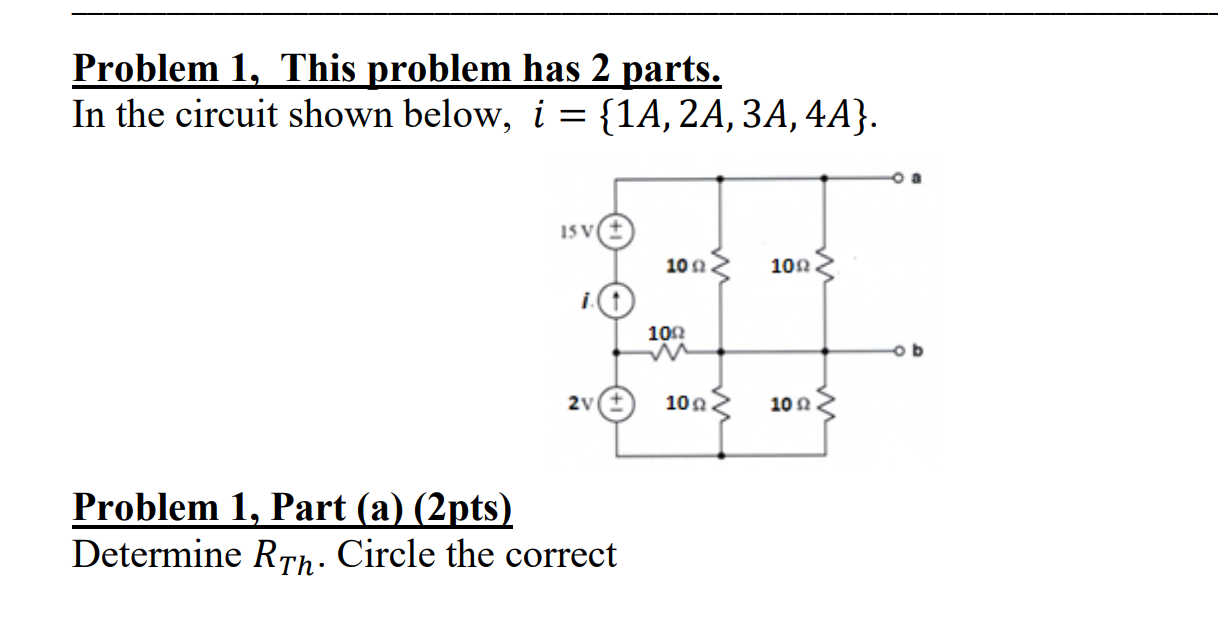Determine R_TH. Circle the correct.

Understand the Problem
The question is asking us to determine the Thevenin resistance (R_TH) of the given electrical circuit. This involves analyzing the circuit configuration and calculating the equivalent resistance seen from the terminals.
Answer
The Thevenin resistance \( R_{TH} \) is \( 15Ω \).
Answer for screen readers
The Thevenin resistance ( R_{TH} ) is ( 15Ω ).
Steps to Solve
-
Identify the terminals Define terminals a and b from which we need to calculate the Thevenin resistance $R_{TH}$.
-
Remove the independent sources To find $R_{TH}$, we need to remove the independent voltage sources. For voltage sources, we replace them with short circuits. In this case, replace the 15V and 2V sources with wires.
-
Simplify the circuit After shorting the voltage sources, identify the resistances in the circuit. The three 10Ω resistors on the upper and lower sections of the circuit are in parallel.
-
Calculate the equivalent resistance For two resistors in parallel, the equivalent resistance $R_{eq}$ can be calculated using the formula:
$$ \frac{1}{R_{eq}} = \frac{1}{R_1} + \frac{1}{R_2} $$
Here, each $R_i = 10Ω$. First, calculate the resistance of the two parallel 10Ω resistors:
$$ R_{AB} = \frac{1}{\frac{1}{10} + \frac{1}{10}} = \frac{10}{2} = 5Ω $$
- Combine with remaining resistors Now you have one equivalent 5Ω resistor in series with another 10Ω resistor:
$$ R_{TH} = R_{AB} + R_3 = 5Ω + 10Ω = 15Ω $$
The Thevenin resistance ( R_{TH} ) is ( 15Ω ).
More Information
The Thevenin resistance is an important concept in circuit analysis, allowing for the simplification of complex circuits into a simple equivalent circuit with a single voltage source and resistance.
Tips
- Neglecting to short circuit the voltage sources, which leads to incorrect calculations of the equivalent resistance.
- Confusing series and parallel resistor combinations; always double-check the configuration before calculating.
AI-generated content may contain errors. Please verify critical information